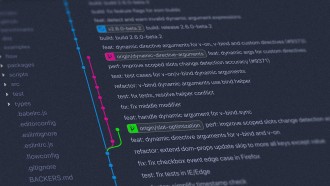The launch date of the Ariane 6 rocket will be announced soon, sparking excitement and trepidation across Europe and beyond.
Ariane 6, the successor to Ariane 5, is vital to the European Space Agency (ESA) as it features higher height, lower weight, and lower launch costs than its predecessor, which recorded 117 launches.
The Ariane 6 rocket will likely be launched between mid-June and the end of July, according to IFL Science. Dr. Josef Aschbacher, ESA Director General, said Ariane 6 will be "modern, cheaper, and more adaptable. "It can leave satellites in other orbits more easily."
Ariane 6 Rocket's Imporant Role in Understanding the Universe
With ESA preparing for Ariane 6 launches, exciting missions await such as the Planetary Transits and Oscillations of Stars (PLATO) observatory in 2026, which will search for habitable planets; The 2029 Atmospheric Remote-Sensing Infrared Exoplanet Large-Survey (ARIEL) mission, along with PLATO, will study 1,000 exoplanet atmospheres. With ARIEL, the Comet Interceptor mission will intercept and investigate comets from the solar system's periphery.
Among the space missions is the CubeSat 3Cat-4 (pronounced "cube cat four") from Spain's Universitat Politècnica de Catalunya to fly on Ariane 6's inaugural launch. The mission aims to assess many climatic variables using GNSS-R, according to the space agency's website.
Luis Juan, 3Cat-4 Team Leader at the Universitat Politècnica de Catalunya says finds it "very fulfilling" to witness their satellite ready for launch after an "incredible journey" for all the members of the team."
Read Also: Experts Explain: Yes, Earthquakes Can Still Occur Even if You Are Far from a Faultline
Dr. Aschbacher said the Ariane 6 rocket plays a significant role in launching the telescopes into orbit as the ESA contributes to the knowledge of the universe.
Future projects include LISA and ATHENA. LISA, the first space-based gravitational wave observatory, and ATHENA, the next-generation X-ray observatory, will provide breakthrough insights into cosmic events in the coming decade.
More Reliable, Cost-Efficient Rocket
Ariane 6 may become a crewed spacecraft after cargo launches. Ariane 6's crewed missions depend on member states' actions and the ESA budget, according to Dr. Aschbacher. Ariane 6's two versions attempt to meet distinct payload demands and attain different orbits. Despite missing reusability, Ariane 6's payload capacity sets it apart from SpaceX's Falcon series.
Dr. Aschbacher noted that they "have managed to overcome all the technical problems" of Ariane 6 rocket during development.
Each trip requires the non-reusable Ariane-6 rocket, which aims to reduce costs by at least 40% over its predecessor, the Ariane-5, according to a report from BBC.
The Ariane-6's upper stage will include a Vinci engine that can perform numerous stop-and-start cycles, increasing its adaptability. This function helps accurately deploy payloads into their orbits, which is important for launching massive constellations of satellites, a current space industry trend.
Europe's space efforts reached a milestone with the launch from Kourou, French Guiana. Ariane 6 is about to change history, but ESA is already looking for the next generation of launch vehicles to continue Europe's space exploration tradition.
Related Article: NASA Officially Opens NOAA Weather Satellite Launch for Content Creators, Influencers






